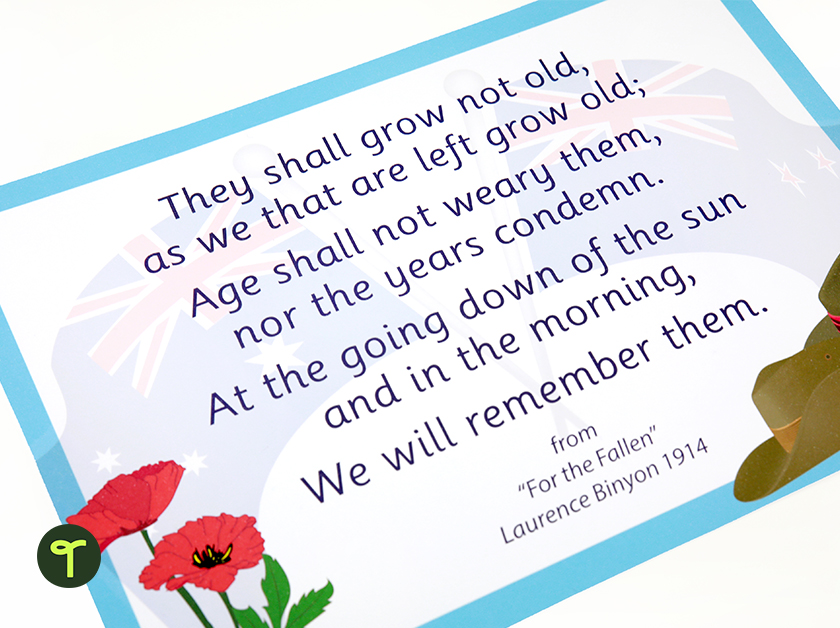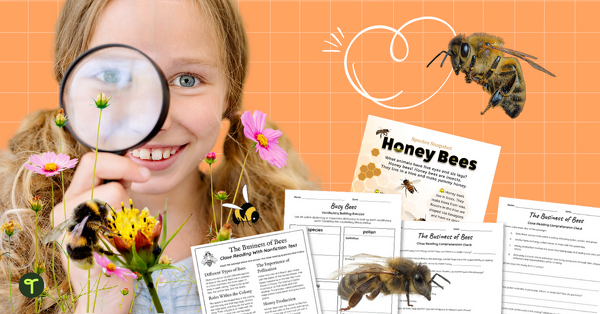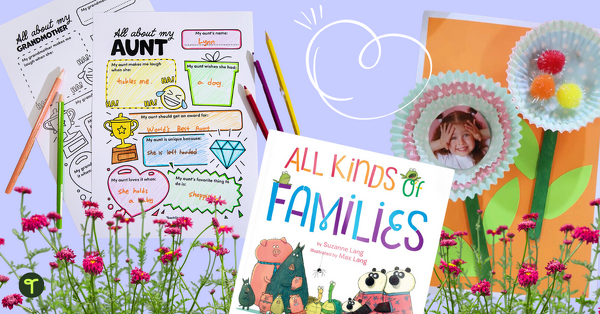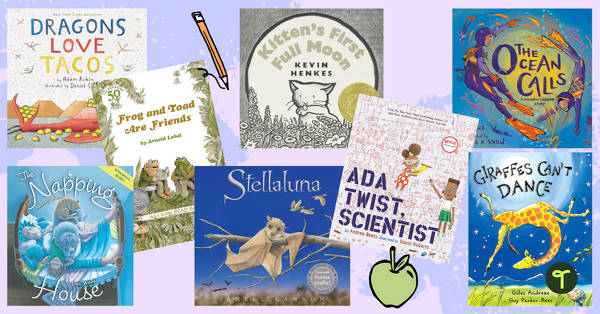When you think Anzac Day, are you automatically thinking about the poetry you can share with your primary students? You’re certainly not alone! It’s common practice around the Teach Starter team to read a special Anzac Day poem in the days leading up to the event — whether we’re introducing students to the story of why we wear poppies or using poetry to recognise and remember the service and sacrifice of our veterans at a school ceremony.
What is the best Anzac Day poetry for your students to analyse this school year or read during your school ceremony? We’ve put together a list of favourites from the members of our teacher team to save you time.
Teach Starter Teacher Tip: Talk to your students about how to be respectful during readings of many of these important poems during commemorative services — students should stand, remove any headwear and refrain from talking during the ceremony to show their respect for the soldiers who have died.
Anzac Day Poems
In Flanders Field by John McCrae
Written by Lieutant-Colonel John McCrae, a Canadian poet, ‘In Flanders Field’ is one of the best-known poems read on both Anzac Day and Remembrance Day and it’s the one that has made wearing a poppy a tradition here in Australia and all around the world. Believed to have been written after McCrae presided over the funeral of a friend, the poem focuses on poppies that grew across the battlefields and cemeteries of Flanders in Belgium during World War I.
It’s because of this that poppies have become a symbol we use to honour those who have died in battle, including many of the ANZACs and other brave men and women we honour on Anzac Day.
Why not plan a lesson on the symbolism and figurative language used in the poem and give students a chance to reflect on the impact of war and its effects on soldiers and their families? Show images related to World War I, and ask students what they know about the war then briefly discuss the context and significance of the war, why it is important to remember, and why we learn about it.
Distribute copies of the poem ‘In Flanders Fields’ to each student, then read the poem aloud to the class while your students follow along. Discuss the meaning of the poem and its message about war and its effects on soldiers and their families then identify the symbols and figurative language used in the poem (e.g. poppies, crosses, and ‘the lamps are going out’), and write the meanings of the symbols on your whiteboard.
- Partner work idea: Have students work with a partner to re-read the poem and identify additional symbols and figurative language. When they’re done, pairs can share their findings with the class.
- Individual Work Idea: Have students write a reflection on the poem, including what they learned about World War I and its effects on soldiers and their families. Encourage them to use the symbols and figurative language from the poem in their reflections.
Additional Activity Idea: After reading ‘In Flanders Field,’ have students create an optical illusion craft featuring a poppy and the phrase ‘Lest We Forget.’ Print the craft template here.
We Shall Keep the Faith by Moina Michael
American writer Moina Michael was inspired by John McCrae’s ‘In Flanders Field’ to write her own poem about Flanders, Belgium, and we admit we may be a bit biased in why she makes the list. She was a teacher too! Michael taught at the University of Georgia in the US, and it was there that she helped take McCrae’s poppy imagery and make it the physical symbol it is today. She’s largely credited with encouraging veterans groups to adopt the flower as a means of honouring soldiers who died in battle.
You can treat this poem like the one that inspired it, using We Shall Keep the Faith to talk about the war and its effect on soldiers, as well as using it to discuss symbolism and particularly the poppy as a symbol on Anzac Day (and Remembrance Day too).
Ask students:
- Why do you think the poppy made such an impression on the author?
- Who is the speaker in the poem and what is their message?
- What does the line ‘We shall keep the faith’ mean to you?
- How does the poem make you feel?
- Are there any words or phrases in the poem that you don’t understand? Can you look them up to find their meanings?
For the Fallen by Laurence Binyon
Perhaps you know this poem better by the name of the fourth stanza? The ‘Ode of Remembrance’ often read on Anzac Day, Remembrance Day and other important days is actually the fourth part of a much longer poem written in 1914 by Binyon, a British writer who was inspired to write his now world-famous work while helping to care for British soldiers during World War I. Binyon has written other war-time poetry, including The Burning of the Leaves, but it’s ‘For the Fallen’ that has become synonymous with paying tribute to casualties of war.
This is a great poem to use when talking about Anzac Day and can also be used to help students study the language, structure, and literary devices used by the poet.
You can download a poster of the Ode of Remembrance portion of the poem right here to hang in the classroom, or print print a copy of the entire poem for students to analyse!
To get the lesson started, provide students with a brief explanation of Laurence Binyon’s life, and provide them with context for the time and situation that inspired the writing of the poem.
Read the poem aloud, then lead a discussion on the meaning of each stanza — or just the Ode of Remembrance — using the following questions as a guide:
- What do you think the author is trying to say in this stanza?
- What words or phrases stand out to you?
- How does the language used by the poet contribute to the overall message of the poem?
Write the main points of the discussion on the whiteboard, and review the main points. Conclude your lesson by asking students if they think the message of ‘For the Fallen’ is still relevant today and encourage your students to share their thoughts and feelings about the poem. You may also want to emphasise the importance of understanding and appreciating poetry as a form of expression and communication.
Teach Starter Teacher Tip: As an extension activity, encourage students to write their own poem inspired by ‘For the Fallen.’









Comments